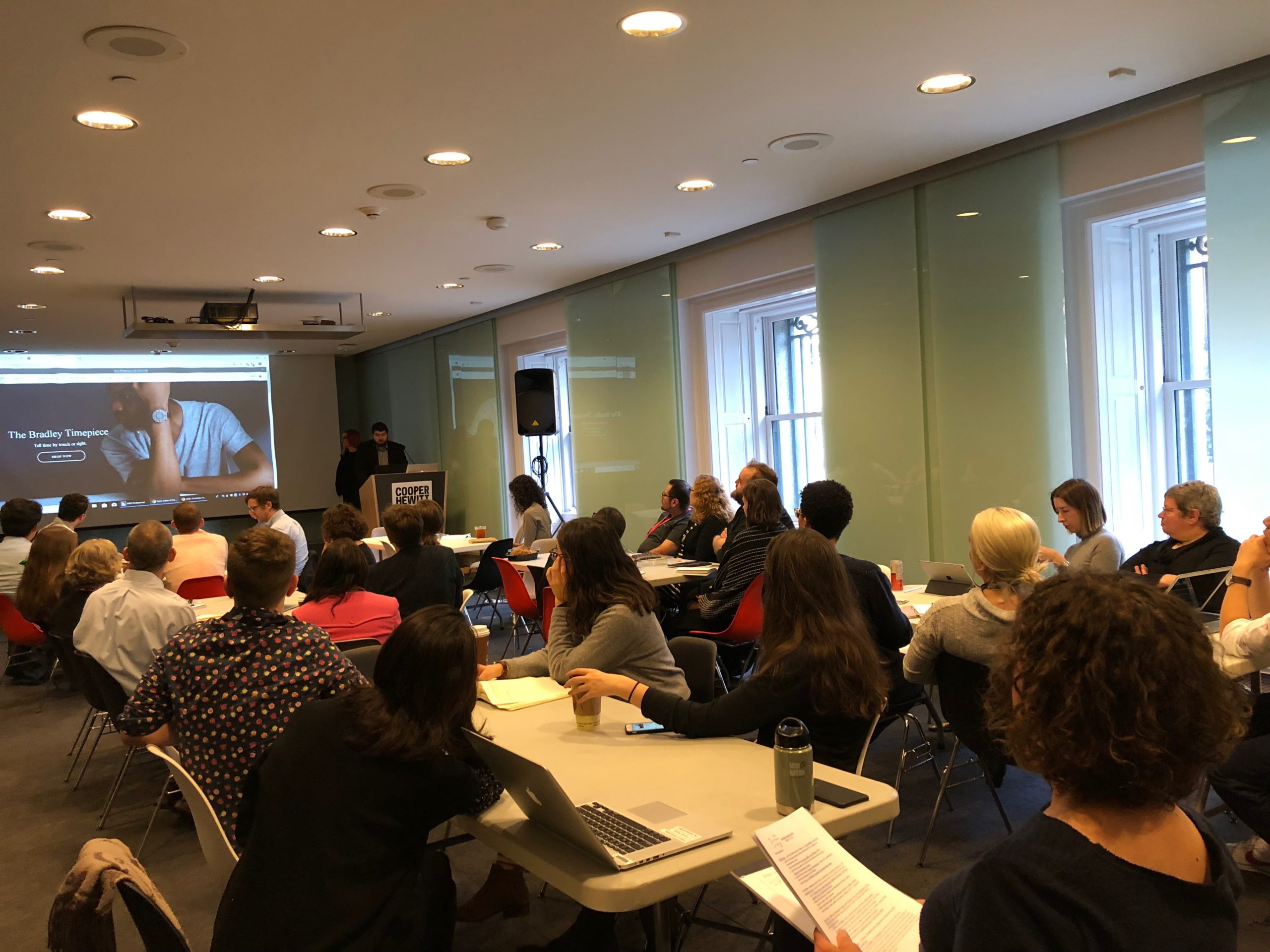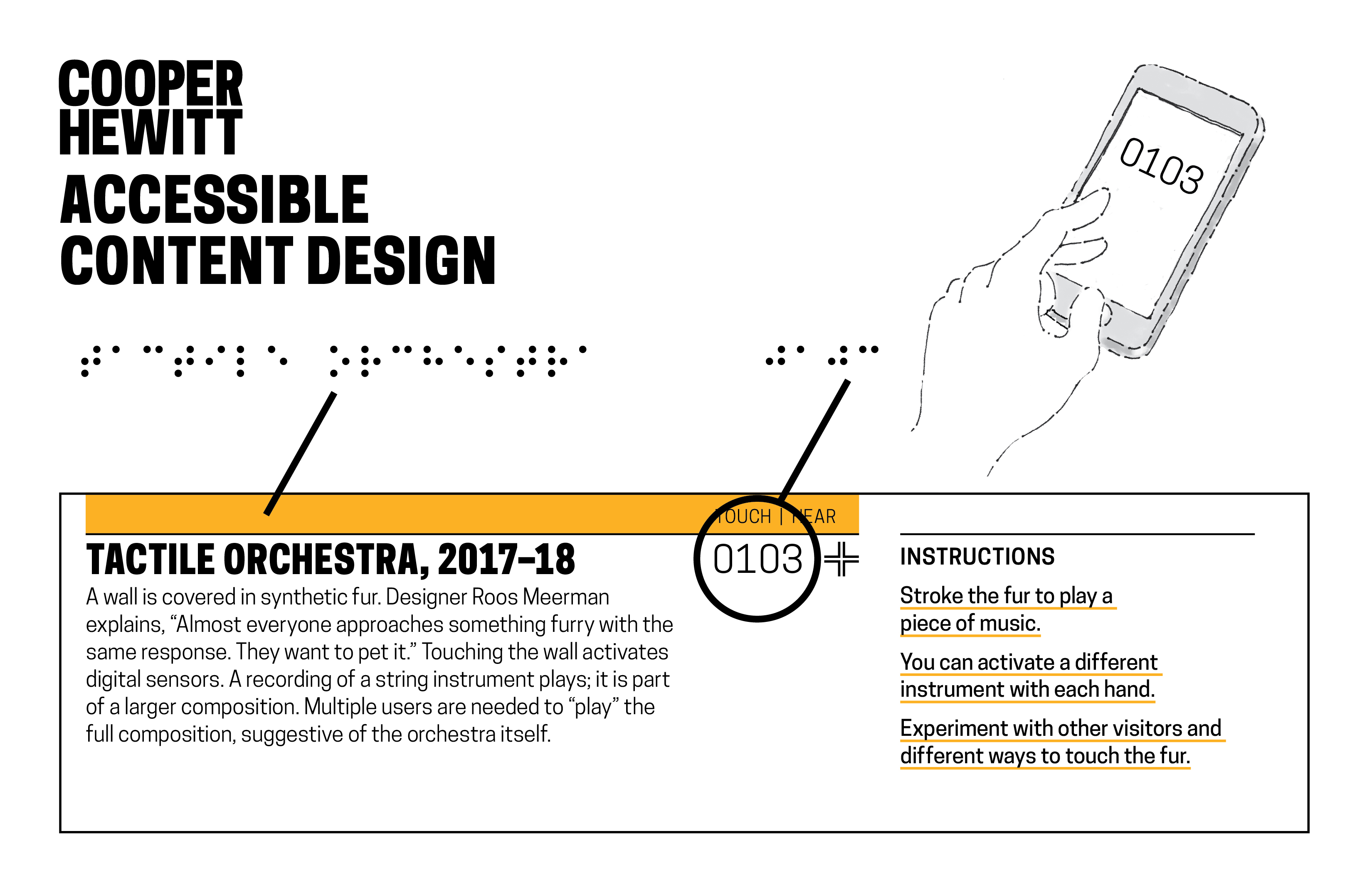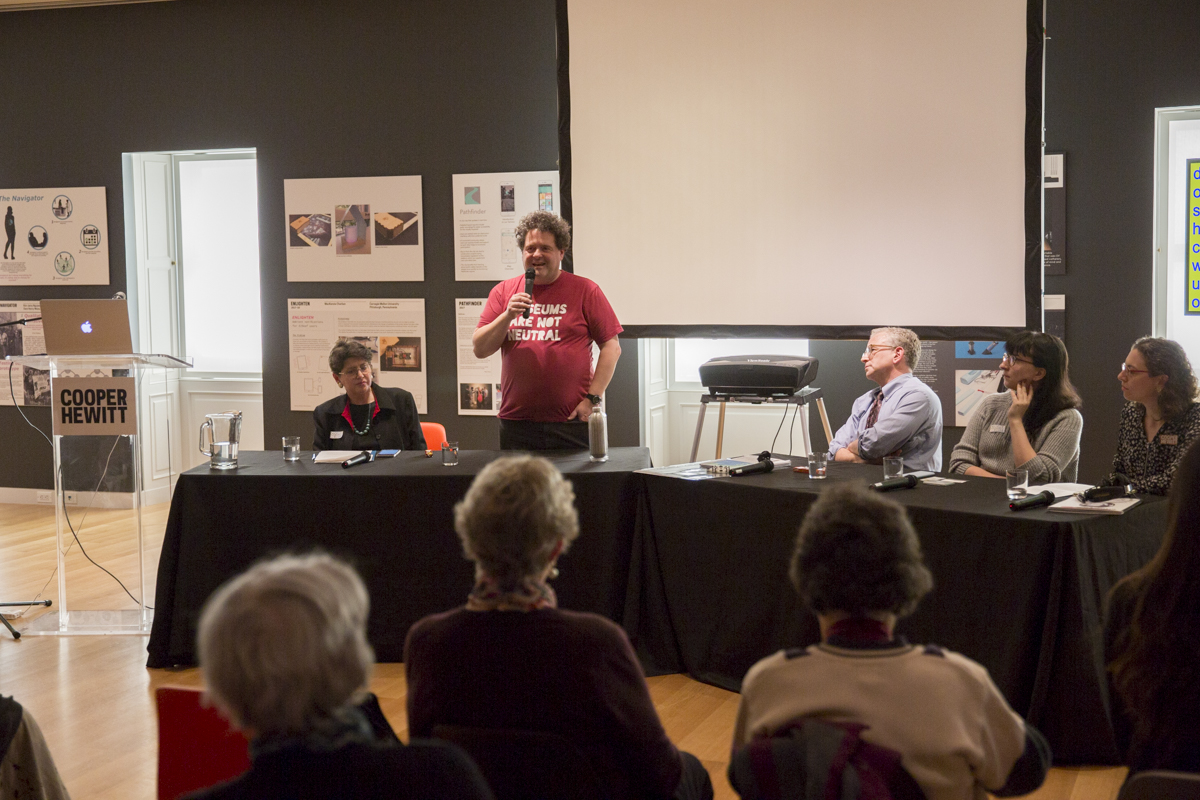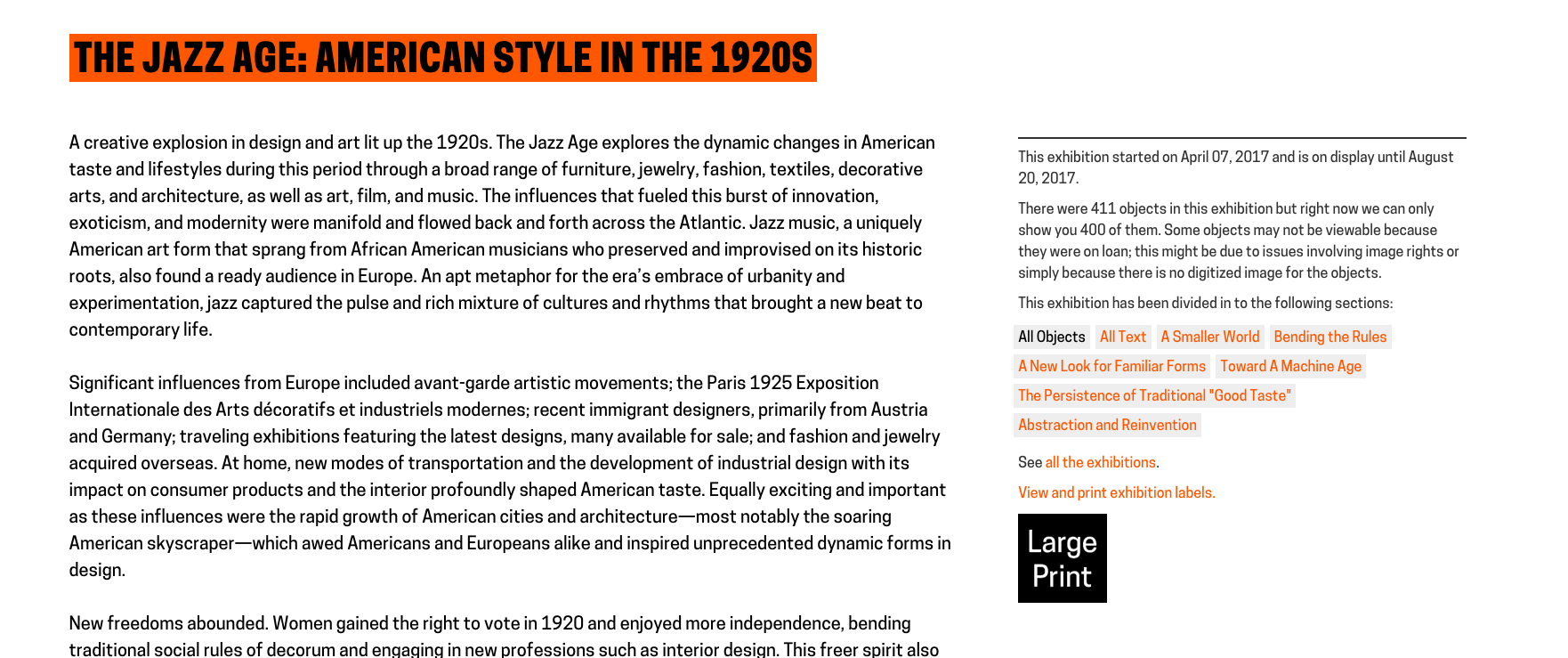Prioritizing Image Descriptions and Digital Equity During this time of crisis, it has never been more important to center access, equity, and inclusion in our response to the unknown. As we adapt quickly and shift our focus online, it is essential that we prioritize and commit to accessibility and inclusion in the digital space. At...
Ellen Lupton, co-curator of the exhibition The Senses: Design Beyond Vision, provides a descriptive audio tour through two dozen projects in the exhibition, with step-by-step guidance for visitors with blindness or low vision. Approximately 30 minutes. Part 1: Getting Started Part 2: Shaping Sound Part 3: Tactile Library Part 4: Wrapping Up (Also available on Soundcloud)....
Cooper Hewitt’s exhibition The Senses: Design Beyond Vision (April 13–October 28, 2018) is one of our museum’s early explorations in developing exhibition design that is accessible to all visitors, including people with sensory differences. Many museums do a good job making their facilities wheelchair-accessible and meeting basic ADA requirements, but it’s another matter to offer...
The seven principles of Universal Design (1997) provide a philosophy and framework for creating inclusive and accessible places and experiences. The workshop brings together educators, curators, and spatial and interactive designers to examine how exhibition developers have used Universal Design in their work for museums and sites of life-long learning. Panelists include: Steven Landau, Research...
Launching alongside the long-awaited Jazz Age exhibition, the exciting new large-print label feature on our collection site is a key part of Cooper Hewitt’s ongoing accessibility initiative. The original goal for the large-print labels project was to create a physical manifestation of our exhibition label content that could be distributed to museum visitors by our Visitor Experiences team...




